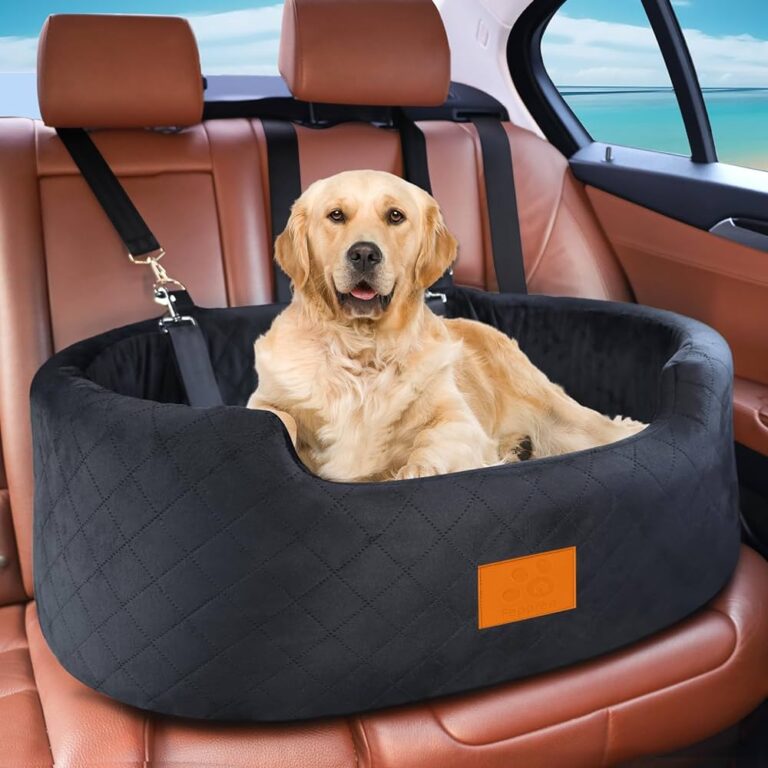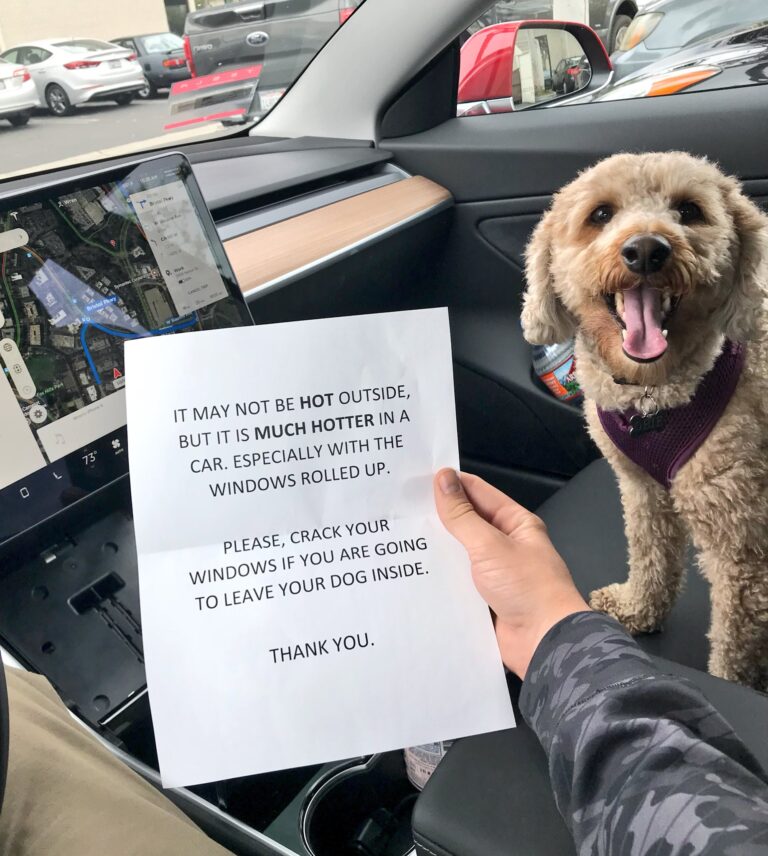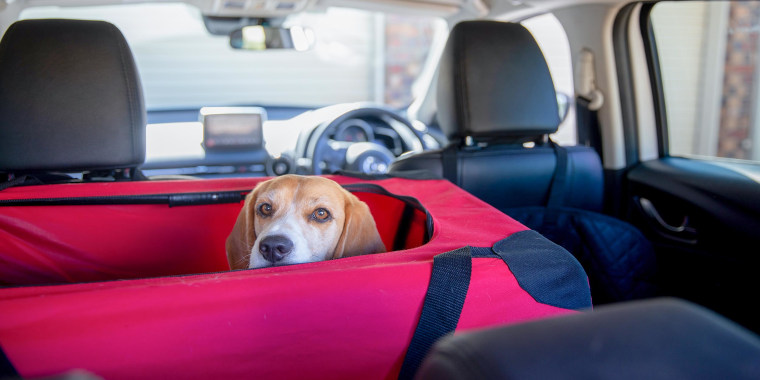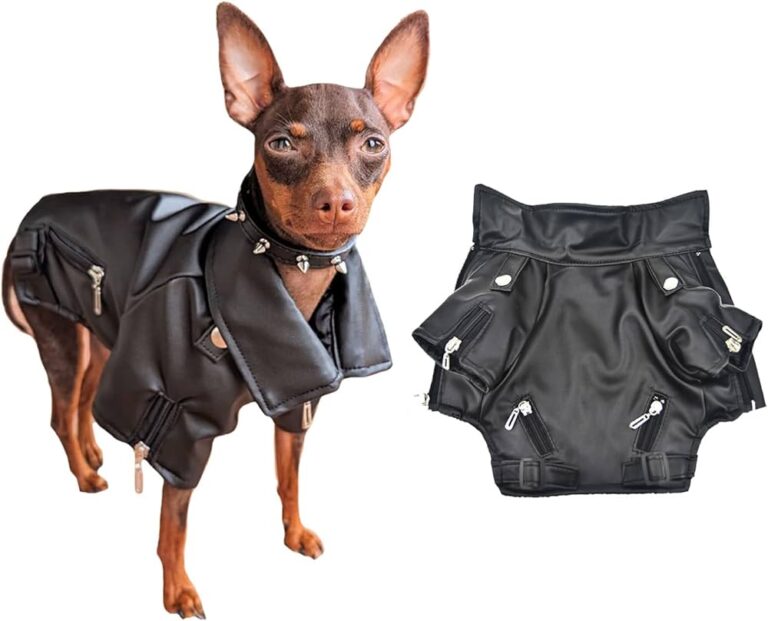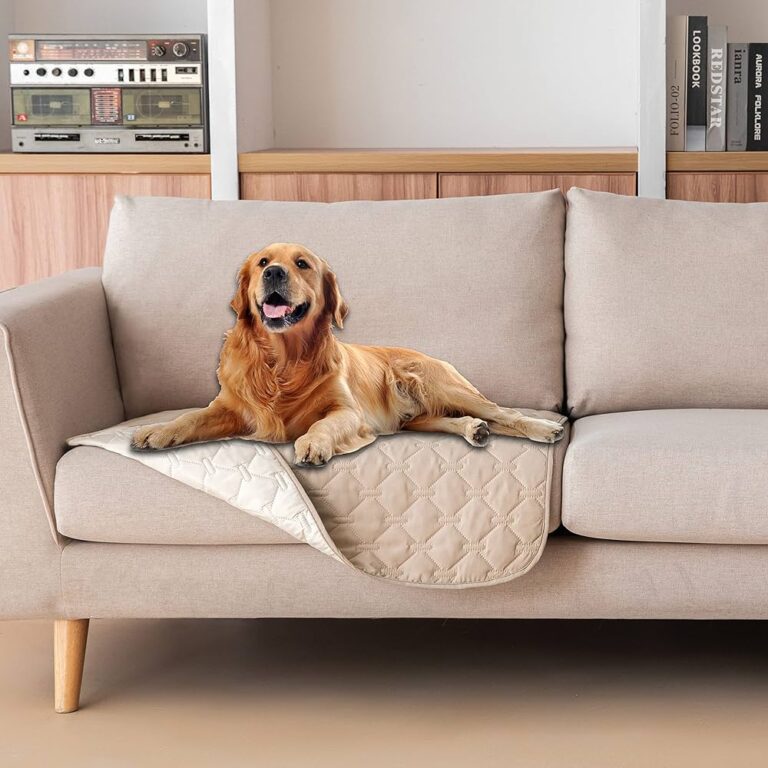Where is the Best Place for a Dog to Sit in the Car? Safe Spots!
The best place for a dog to sit in the car is in the back seat. It is safer for the dog and reduces distractions for the driver.
Ensuring your furry friend’s safety and comfort during car rides is essential for both their well-being and your peace of mind. By choosing the back seat, you provide a secure space where your dog can relax and enjoy the journey without interfering with your driving.
In this blog post, we will explore the importance of proper seating arrangements for dogs in cars and provide tips on how to make car rides enjoyable and safe for your canine companion.
Introduction To Canine Car Safety
Ensuring canine car safety is crucial, especially when it comes to determining the best place for a dog to sit in the car. Discover the ideal spot to keep your furry friend secure and comfortable during car rides, promoting their safety and well-being.
The Importance Of Proper Seating
As pet parents, we all want to keep our furry friends safe while traveling with them in the car. However, have you ever thought about where your dog should sit in the car? The answer to this question is crucial as it can significantly impact the safety of your pet. Proper seating for your dog in the car is not only essential for their safety but also for yours and other passengers in the car.
When it comes to canine car safety, there are a few things you should consider before hitting the road. The most important one is to ensure that your dog is seated in the safest part of the vehicle. The safest spot for your dog in the car is in the backseat, secured with a seat belt or a harness. If you have a small dog, you can use a crate or a carrier to keep them safe. It’s essential to note that your dog should never sit in the front seat, especially if your car has airbags. The impact of an airbag deployment can be fatal for your dog.
Assessing The Risks Of Improper Placement
Improper placement of your dog in the car can lead to severe consequences, such as injuries or even death. For instance, if your dog is sitting in the front seat, they are at risk of getting hit by an airbag in case of an accident. Similarly, if your dog is not secured with a seat belt or a harness, they can get thrown around the car, leading to injuries or trauma.
Moreover, if you have a large dog that is not secured, they can become a significant distraction to the driver, leading to a potential accident. Therefore, it’s crucial to assess the risks of improper placement and ensure that your dog is seated in the safest part of the car, secured with a seat belt or a harness.
Ensuring proper seating for your dog in the car is crucial for their safety as well as yours and other passengers in the car. By following the guidelines mentioned above, you can keep your furry friend safe and secure while traveling with them in the car. Remember, always secure your dog in the backseat, use a seat belt or a harness, and never let them sit in the front seat.
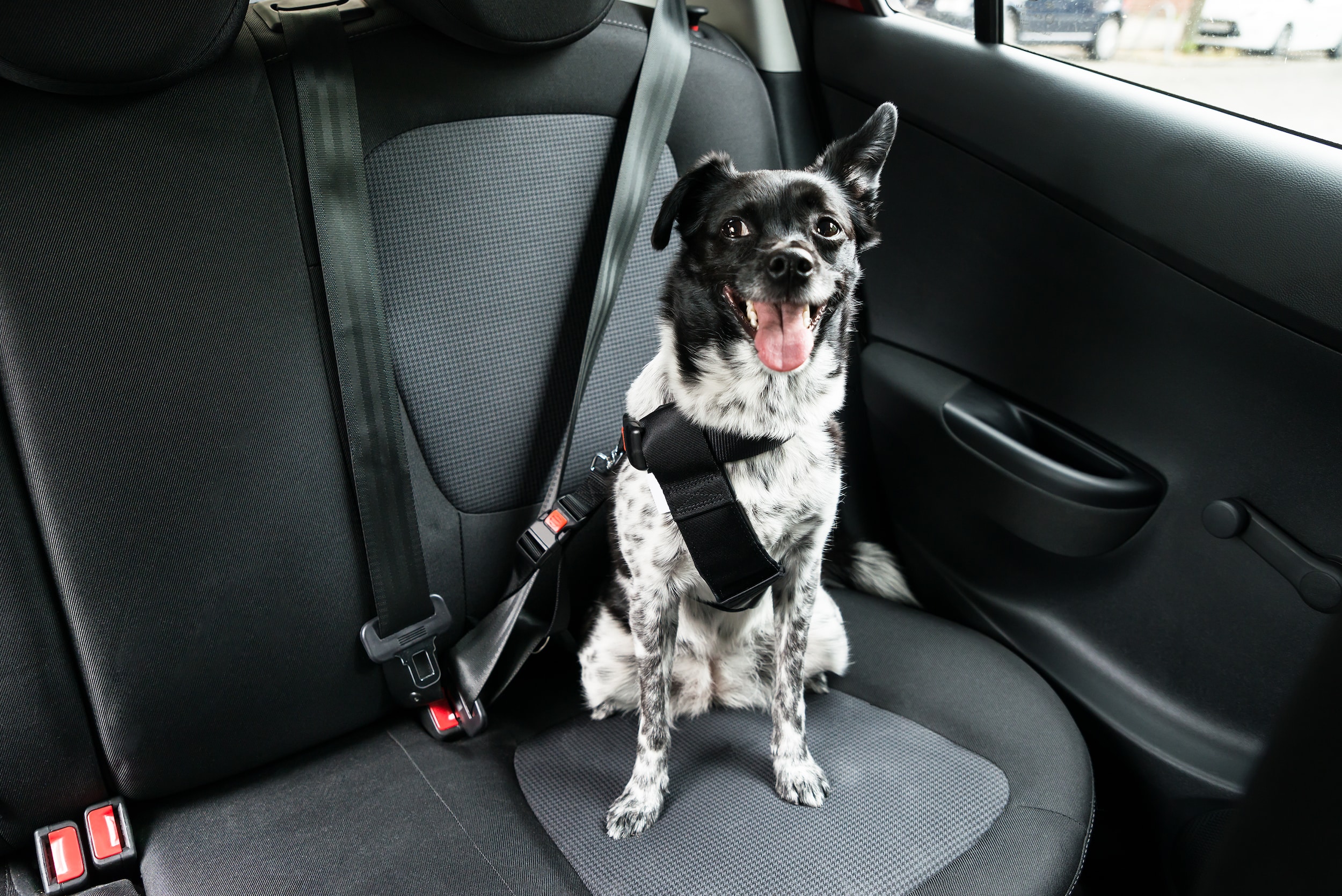
Credit: www.ramseysubaru.net
Passenger Seat: Pros And Cons
The passenger seat is a popular choice for a dog to sit in the car, as it allows for easy interaction and monitoring. However, it may not be the safest option in the event of an accident. Consider using a dog car seat or harness to ensure both safety and comfort for your furry companion while traveling.
When traveling with your dog, finding the best place for them to sit in the car is crucial for their safety and comfort. The passenger seat is a popular choice for many pet owners, but it comes with its own set of advantages and disadvantages. Let’s explore the potential dangers for front-seat dogs and when it is acceptable for them to occupy the passenger seat.Potential Dangers For Front-seat Dogs
Placing a dog in the front passenger seat can expose them to various risks. The most significant danger is related to airbag deployment, which can cause severe injury or even be fatal to a dog upon impact. Additionally, the proximity to the dashboard and windshield increases the likelihood of injury in the event of sudden braking or a collision.When Is The Passenger Seat Acceptable?
In some cases, it may be acceptable for a dog to sit in the passenger seat. This includes situations where the dog is secured in a specially designed dog car seat or a harness that attaches to the seat belt. Moreover, if the dog is small and the airbag can be deactivated, the passenger seat may be a viable option. However, it’s crucial to assess the individual dog’s behavior and comfort to determine if the passenger seat is a suitable choice. In conclusion, while the passenger seat may offer a sense of closeness and comfort for both you and your dog, it’s essential to weigh the potential dangers against the benefits. Always prioritize the safety and well-being of your furry companion when deciding on their seating arrangement in the car.Back Seat Safety For Dogs
Benefits Of Back Seat Travel
Riding in the back seat provides numerous benefits for your furry companion. It ensures their safety, reduces the potential for distraction, and allows them to enjoy the scenery. Additionally, it minimizes the risk of injury in case of an accident.
How To Secure Your Dog In The Back
Securing your dog in the back seat is crucial for their safety. You can use a dog seat belt, a travel crate, or a pet car harness to keep them secure. Ensure that the dog seat belt is attached to the harness and the car’s seat belt system for optimal safety.
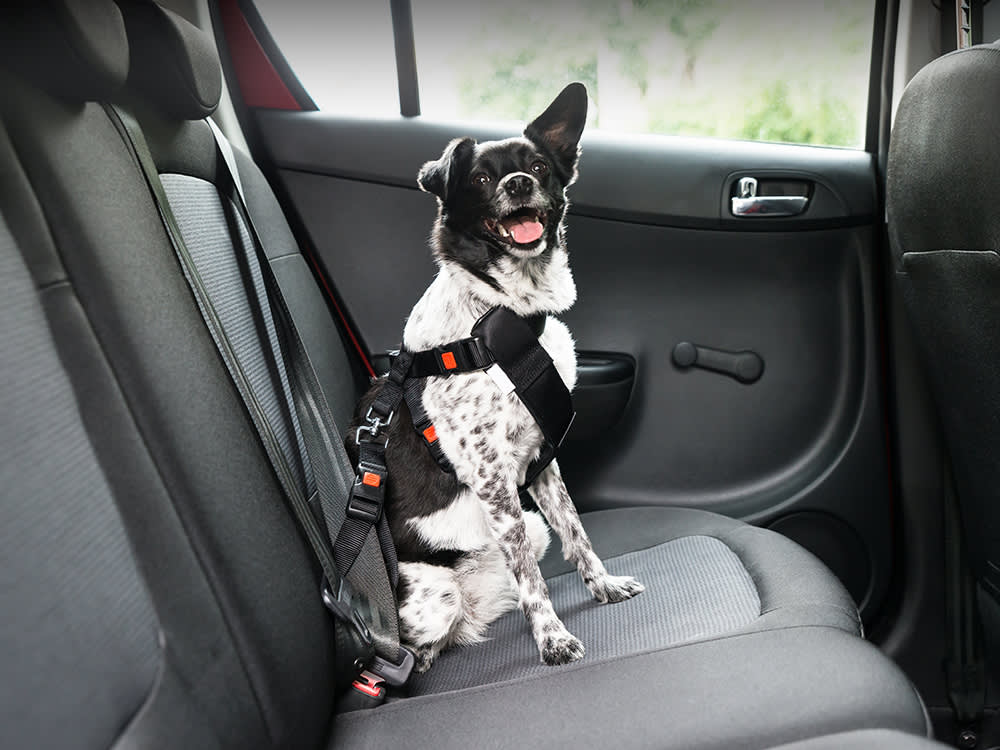
Credit: www.thewildest.com
Cargo Area: A Safe Haven?
When it comes to traveling in a car with your furry friend, safety should always be the top priority. One question that often arises is where is the best place for a dog to sit in the car? While there are various options to consider, one potential safe haven for your canine companion is the cargo area. In this blog post, we will explore the advantages of utilizing the cargo space for dogs, as well as the precautions that need to be taken to ensure their safety.
Advantages Of Cargo Space For Dogs
The cargo area of a car can provide several advantages for dogs during car rides. Here are a few key benefits:
- Ample Space: Unlike the limited legroom in the passenger area, the cargo space offers a larger area for your dog to sit, lie down, and move around comfortably.
- Less Distractions: By placing your dog in the cargo area, you can minimize distractions for the driver. This allows you to focus on the road and ensures a safer journey for both you and your furry friend.
- Reduced Risk of Injury: In the event of sudden stops or accidents, dogs in the cargo area are less likely to be thrown forward due to the presence of a barrier, such as a dog crate or cargo net.
Precautions For Using The Cargo Area
While the cargo area can offer a safe haven for your dog, it is essential to take certain precautions to ensure their well-being. Here are some important considerations:
- Secure the Cargo Space: Make sure the cargo area is properly secured to prevent any movement or shifting during the journey. This can be achieved by using cargo nets, barriers, or crates that are designed to fit securely in the space.
- Provide Comfort and Safety: Place a comfortable mat or bed in the cargo area to provide cushioning for your dog. Additionally, ensure that the temperature in the cargo area is suitable and well-ventilated.
- Regular Breaks: Dogs, like humans, need regular breaks during long car rides. Plan your journey accordingly, allowing time for your dog to stretch their legs, hydrate, and relieve themselves.
- Monitor Your Dog: Keep an eye on your dog while they are in the cargo area. Look out for any signs of distress, discomfort, or motion sickness. If necessary, adjust their position or consider an alternative seating arrangement.
By following these precautions, you can ensure that your dog’s experience in the cargo area is safe and enjoyable. Remember, every dog is unique, so it’s important to consider their individual needs and preferences when deciding on the best place for them to sit in the car.
Car Safety Accessories For Dogs
Ensuring your dog is safe and secure in the car is essential for both their well-being and the driver’s peace of mind. Car safety accessories for dogs play a crucial role in keeping your furry friend protected while traveling.
Harnesses And Seat Belts
Dog harnesses and seat belts are designed to keep your pet restrained in the car, preventing them from moving around excessively. These accessories help minimize distractions and ensure your dog stays safe in the event of sudden stops or accidents.
Barriers And Crates
Barriers and crates provide a physical barrier between your dog and the rest of the vehicle. Barriers can be installed in the back seat or cargo area, while crates offer a secure and confined space for your pet to travel in. These accessories help prevent your dog from wandering and causing potential hazards.
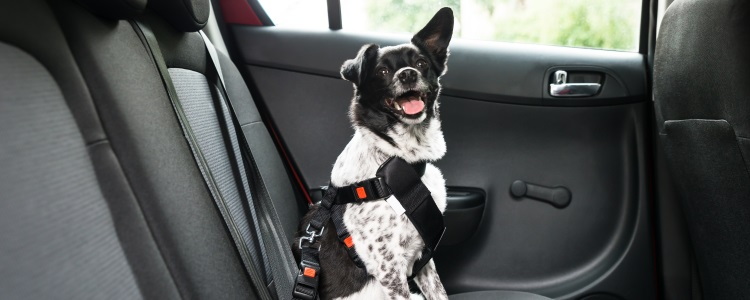
Credit: www.autocreditexpress.com
Special Considerations For Small Dogs
Small dogs require special consideration when traveling in a car. The best place for a small dog to sit in the car is in a secure and comfortable dog car seat or a carrier. This helps to keep them safe and prevent distractions for the driver.
Special Considerations for Small Dogs When it comes to traveling with your furry friend, safety should be your top priority. This is especially true for small dogs, as they are more vulnerable to injury during car rides. Here are some special considerations to keep in mind for small dogs when deciding the best place for them to sit in the car.Booster Seats And Comfort
One option for small dogs is a booster seat, which can elevate them to a height where they can see out of the window and be more comfortable during the ride. Look for a booster seat that is specifically designed for small dogs and can be securely fastened to the car seat. Additionally, make sure the booster seat is comfortable for your dog, with enough padding and support to prevent any discomfort or injury during sudden stops or turns.Avoiding Airbag Risks
Another important consideration for small dogs is the risk posed by airbags. If your dog is sitting in the front seat and an airbag deploys, it could cause serious injury or even death. Therefore, it’s important to always place your small dog in the back seat, away from any airbags. Additionally, make sure to properly secure your dog with a harness or seat belt to prevent them from being thrown around during a sudden stop or collision. In conclusion, when traveling with a small dog, it’s important to prioritize their safety and comfort. Consider using a booster seat to elevate them to a comfortable height, and always place them in the back seat to avoid any airbag risks. By taking these special considerations into account, you can ensure a safe and enjoyable car ride for both you and your furry friend.Training Your Dog For Car Rides
Introducing your furry friend to car travel can be a daunting task, but with the right approach and training, it can become an enjoyable experience for both you and your pet. Whether you’re planning a road trip or just a short drive to the vet, helping your dog acclimate to car rides is essential for their safety and comfort. Here are some tips for training your dog for car rides, ensuring a smooth and stress-free journey for everyone involved.
Introducing Your Dog To Car Travel
When it comes to introducing your dog to car travel, it’s important to start with short, positive experiences. Begin by simply sitting in the parked car with your dog, offering treats and praise to create a positive association. Gradually, start the engine and take short trips around the block, gradually increasing the duration as your dog becomes more comfortable. Consistency and patience are key when introducing your dog to car travel.
Behavioral Tips For A Smooth Ride
Once your dog is accustomed to car rides, there are several behavioral tips that can ensure a smooth and enjoyable journey for both you and your pet. Consider the following:
- Use a secure and comfortable restraint system to keep your dog safe during the ride.
- Bring along familiar items such as their favorite toy or blanket to provide a sense of comfort and security.
- Take frequent breaks to allow your dog to stretch their legs and relieve themselves.
- Refrain from feeding your dog a large meal before the ride to prevent car sickness.
- Keep the car well-ventilated and at a comfortable temperature for your dog.
Legalities And Insurance Implications
When traveling with your furry friend, it’s crucial to understand the legal implications and insurance considerations of where your dog sits in the car. Ensuring compliance with state laws and the impact on your auto insurance are essential factors to consider for a safe and responsible journey.
Understanding State Laws
Each state has specific laws governing the transportation of pets in vehicles. In California, for example, drivers are prohibited from allowing a pet to sit on their lap while operating a vehicle. In New York, pets must be restrained in a manner that prevents them from interfering with the driver’s control of the vehicle. These laws aim to ensure the safety of both the pet and the occupants of the vehicle. It’s important to familiarize yourself with the laws in your state to avoid potential fines and penalties.
Impact On Auto Insurance
The placement of your dog in the car can also have implications for your auto insurance. If your pet is unrestrained and causes a distraction that leads to an accident, it could impact your insurance coverage. In the event of a claim, insurance companies may consider the presence and positioning of your pet when determining liability and coverage. To avoid potential insurance issues, it’s advisable to secure your pet in a safe and appropriate manner while traveling in a vehicle.
Emergency Preparedness
For emergency preparedness while traveling with your dog, it’s important to secure them in the car. The best place for a dog to sit is in a crate or secured with a harness in the back seat. This ensures their safety in case of a sudden stop or accident.
First Aid Kits And Emergency Protocols
When it comes to emergency preparedness, it’s important to have a first aid kit and emergency protocols in place for your dog. A well-stocked first aid kit can help you treat minor injuries and stabilize your dog until you can get them to a veterinarian. It’s also important to have emergency protocols in place, so everyone in the car knows what to do in case of an emergency.What To Do In Case Of An Accident
In case of an accident, the first thing to do is to check on your dog’s condition. If they’re conscious and able to move, you should move them to a safe area away from traffic. If they’re unconscious or unable to move, you should call for emergency veterinary assistance immediately. It’s also important to exchange information with the other driver and document any injuries or damage. In conclusion, emergency preparedness is essential when traveling with your dog in the car. Having a first aid kit and emergency protocols in place can help you handle any situation that may arise. In case of an accident, it’s important to prioritize your dog’s safety and well-being, and seek veterinary assistance as soon as possible.Conclusion: Balancing Safety And Comfort
Enhance your dog’s safety and comfort by securing them in the back seat with a harness or in a crate to prevent distractions while driving. This location provides optimal protection in case of sudden stops or accidents, ensuring a safe and enjoyable ride for your furry companion.
Making Informed Decisions
Consider your dog’s size and temperament when deciding where they should sit in the car.
- Large dogs may be safest in the back seat with a seat belt harness or in a pet carrier.
- Small dogs can ride in the front passenger seat in a secured crate or with a seat belt attachment.
- Anxious dogs may benefit from being close to you in the back seat or in a calming wrap.
Creating A Positive Experience For Your Dog
Ensure your dog’s comfort by using a pet bed or blanket in their designated car seat area.
- Frequent breaks during long drives can help relieve your dog’s stress and prevent accidents.
- Keep the car cool and well-ventilated to maintain a comfortable environment for your furry friend.
Frequently Asked Questions
Where Should My Dog Sit In The Car?
Your dog should sit in the car’s back seat, preferably using a secured harness or a crate. This keeps them safe and prevents distractions for the driver. Remember to avoid placing them in the front seat or allowing them to stick their head out of the window, as it can be dangerous.
Should Dogs Sit In The Front Or Back Of A Car?
For safety, dogs should sit in the back of a car. Use a harness or crate to secure them.
What Is The Best Way To Travel In A Car With A Dog?
Ensure your dog is secure with a harness or carrier. Use a pet barrier or seatbelt. Take breaks for walks and bathroom stops. Keep windows partially open for fresh air. Bring water and snacks for your furry friend.
Should Dogs Go In The Boot Or Back Seat?
Dogs should be transported in the boot of the car rather than the back seat. It is safer for both the dog and the driver.
Conclusion
Finding the best place for your dog to sit in the car is crucial for their safety and well-being. By considering factors such as size, temperament, and the use of proper restraints, you can ensure a comfortable and secure ride for both you and your furry friend.
Remember, a happy dog in the car means a happier journey for everyone involved. So, prioritize your dog’s comfort and safety whenever you hit the road together.
- Can I Get in a Taxi Without a Car Seat? - January 26, 2025
- Can I Get Chlamydia From a Toilet Seat? - January 26, 2025
- Can I Get an Uber With a Car Seat? - January 26, 2025

